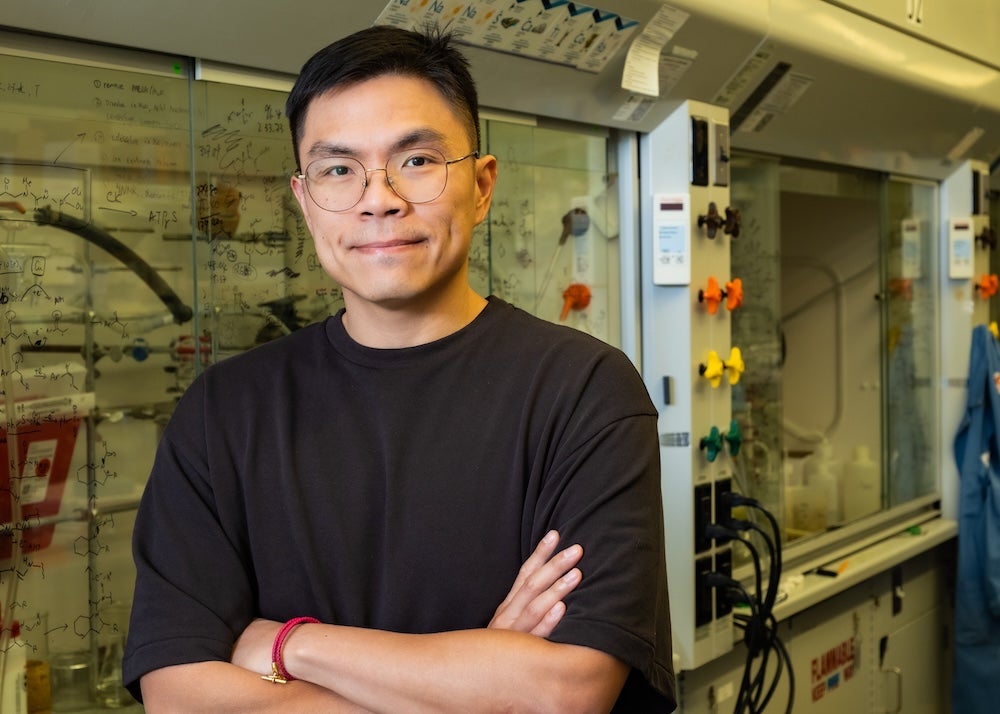A research team led by Rice University has introduced an innovative strategy that uses enzymes to convert one terpenoid structure into many different forms, streamlining synthetic pathways and redefining the approach to natural product synthesis.

For decades, organic chemists believed that each natural product scaffold required a custom synthesis. However, this assumption has been challenged by a study led by Hans Renata, associate professor of chemistry at Rice, and published in Nature Chemistry June 16. The research team developed a method that transforms a single compound, sclareolide, into multiple structurally diverse terpenoids through enzymatic oxidation and chemical reorganization.
“We thought, ‘What if the enzymatic step could be more than just a means to an end? What if it could unlock a whole new map of chemical space?’” Renata said.
This change in mindset allowed the researchers to move from a singular scaffold to several, significantly enhancing synthetic efficiency.
From one scaffold, many paths
The researchers began with sclareolide, a commercially available sesquiterpene lactone derived from plants and traditionally used in the fragrance industry. This compound served as the foundation for a strategy that combined enzymatic and chemical transformations.
The research team selectively oxidized the molecule’s third carbon atom using engineered cytochrome enzymes, which are large heme-containing proteins essential for metabolizing drugs and foreign substances. This transformation was previously unattainable through purely chemical means, Renata said.
The resulting alcohol acted as a versatile platform for further chemical modifications. The approach diverges from conventional scaffold-focused methods, allowing for chemical transformations in molecules through nonbiological processes. This flexibility enabled the creation of entirely new molecular architectures without strictly following biosynthetic pathways.
Using this scaffold-hopping strategy, the research team successfully synthesized four distinct terpenoid natural products: merosterolic acid B, cochlioquinone B, (+)-daucene and dolasta-1(15),8-diene. Each product features a unique carbon framework derived from the same oxidized sclareolide intermediate.
Rewriting retrosynthesis playbooks
The researchers’ strategy challenges traditional retrosynthetic logic, which typically advocates for a tailored approach for each new molecular target. Instead, this method suggests a shared entry point with branching pathways, significantly improving the efficiency and flexibility of synthetic design.
“We’re no longer starting from scratch for each new scaffold,” Renata said. “We’re leveraging enzyme-enabled transformations to access new structures in fewer steps and with greater precision.”
By enhancing the selectivity and reactivity of cytochrome enzymes, the researchers have broadened the possibilities for modifying complex molecules, leading to applications in medicinal chemistry and drug development down the line.
Moreover, the ability to produce multiple products from a common precursor saves time and costs while providing a framework for exploring the vast chemical space of bioactive compounds with greater efficiency, Renata said.
“Our work illustrates how a single enzymatic oxidation can serve as a nexus for molecular diversity,” he said. “It’s a concept that could transform how we think about synthesis.”
The study was co-authored by Rice graduate student Junhong Yang and former postdoctoral associate Heping Deng as well as Fuzhuo Li from Fudan University and Jian Li from Shanghai Jiao Tong University. Funding was provided by the National Science Foundation and the Alfred P. Sloan Foundation

